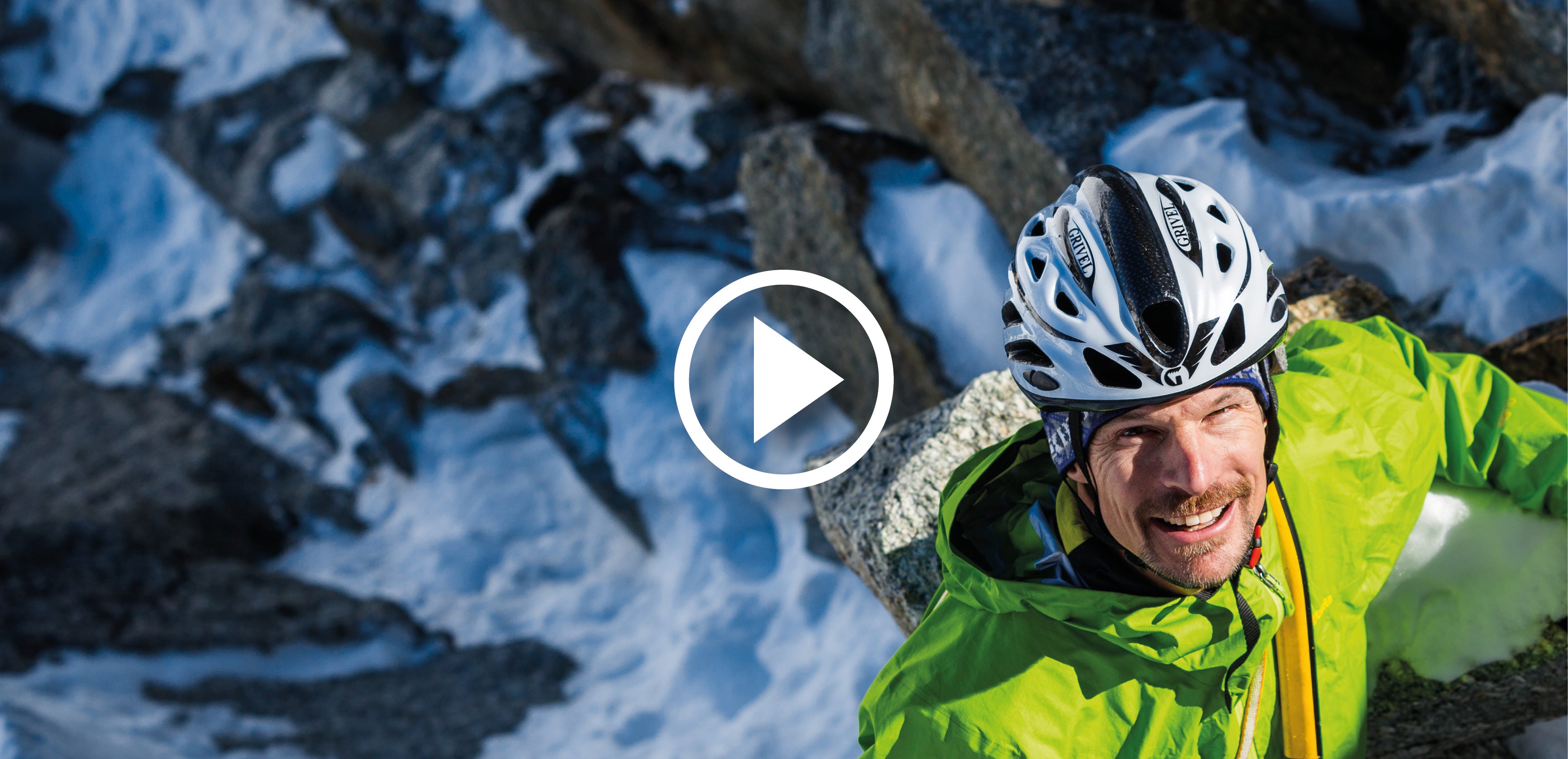
Alpine Mentorship videos by Steve House - Introduction
Published on 11/07/2019
Climbing mountains is incredibly dangerous. I believe long-term success as an alpinist should be defined as survival to old age. Alpinism and all its component sports (Rock, Ice and Mixed Climbing, Ski Touring and Ski Mountaineering) are a continuous series of life-and-death decisions that begin with planning and end when you finally step off the mountain.
Technical skills (rope-work, belaying, etc) and movement (climbing or skiing) skills are easily taught. But when you look at what kills people, it’s usually not a bad belay or an inability to climb well. This is especially true when you look at accidents among advanced-intermediate to expert climbers and skiers. They’re most often killed by errors in decision making, miscalculations. So how do you teach judgement? And to take it one step further, how do we as a community create a more open culture that discusses risk and judgement in plain terms?
When I started thinking about this, I began by looking at other judgement-heavy pursuits. Teaching medicine requires students to be backed up by redundancy (multiple doctor’s opinions) and checklists. Business schools lean heavily on case studies. The majority of professions use various combinations of book-learning, lecturing, and apprenticeship.
In mountain sports, specifically in alpine climbing, learning to make good decisions evolves uniquely for each climber or skier as some combination of mentorship and the school-of-hard-knocks. The later is dangerous. The former is difficult to find. Guide services are an excellent choice, but are expensive.

Mentorship is, in my view, the best way to learn how to make good decisions. I lucked into amazing mentors who taught me mountain judgement by living through it with me on hundreds of ascents. I believe so strongly in mentorship that in 2012 my wife Eva and I founded Alpine Mentors as a 501(c)3 non-profit corporation to establish an international mentorship program for alpine climbing. Grivel has been a sponsor of this project from the beginning.
Mentorship groups such as this were not new. Basically all the alpine countries, led by the French who founded the first youth mentoring program in the early 90’s, have these groups.

We had immediate and strong support from the outdoor industry: Polartec, Patagonia, Outdoor Research, Grivel, La Sportiva, and Asolo all got on board. This was important to me because this cause transcends brand identities. In total we organized fundraising that would bring in about $20,000 per year. That, combined with numerous smaller, private donors, guaranteed enough money to run and insure Alpine Mentors—at no cost to students—provided that the labor was done on a volunteer basis.
Between 2012 and 2018 we had three groups of mentees. You can learn about our past groups on the Alpine Mentors Blog. One of the things I’ve taken away from these last six years of work as a mentor is that 1:1 or small-group mentorship is ideal. But it comes at a huge cost. Some of these past six years I was traveling and climbing 8-12 weeks per year for Alpine Mentors, donating all my time. The effort and personal cost became unsustainable.
Secondly, and just as importantly, I found that despite a robust application, interview, and team development process, I was not always finding the right people. People who are ready for the deep personal development and reflection that comes from looking deeply into the intimate mirror of a climbing partner and mentor. I estimate that I was running about a 50% success rate with the students I selected. Which translated to weeks and weeks of time over multiple years to make a meaningful impact for two people at a time. It didn’t add up in a way that satisfied me or the demand. (Our last group had 117 qualified applicants for 4 student positions.)
Mentorship through video?
I’d been wanting to video a group’s entire mentorship process since the beginning. But not only is video equipment clunky, it’s a rare person who is comfortable being open, honest, and raw with cameras rolling. I didn’t feel right to ask students to share that much.
The first nugget of the Alpine Principles video idea formed after I read a book by hedge fund manager Ray Dalio titled Principles: Life and Work. The difficulty and audacity of what he attempted, and in many ways (but not always) succeeded in doing, impressed me. I began to wonder if we could develop similar principles for climbing. If so, what would they be? And how would we share them? When Dalio came out with his Principles Video, an idea was cemented. We could do this.
With this Alpine Principles video series I know I can reach far more people, though admittedly in a less impactful way. And, in future rounds, I can send a camera guy climbing with other experienced alpinists to record their experiences, and let them come up with their own sets of Alpine Principles. As I say in one of these videos, I’m under no illusion that I have all the answers.
It is my sincere hope that using video in this way will help us to teach one another the delicate art of making good decisions in the mountains. There are no rules in alpinism. But there can certainly be some guardrails. Here are the first five principles to get you to the summit, and back, in safety.
I will introduce each video individually. First, I ask you to watch the Introductory Video:
If you want to see the rest, you can check the Alpine Principles Video Library.
Thank you for your views and support. PLEASE share with all your friends. The more views we have the easier it will be to convince sponsors to continue this project. Grivel is, as with any good partner, already on-board for the next step in this adventure and evolution of mentorship in the modern age.
Article, pictures and video by Steve House, July 2019.
Uphill Athlete - www.uphillathlete.com


